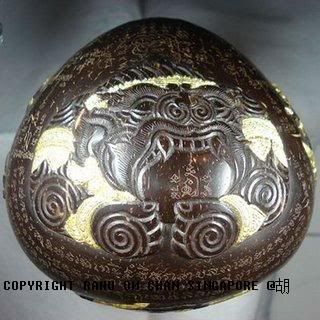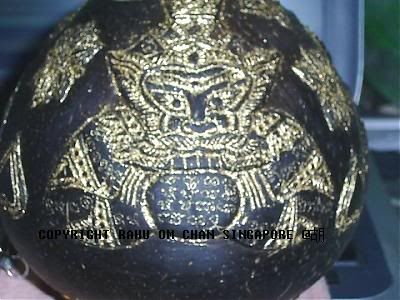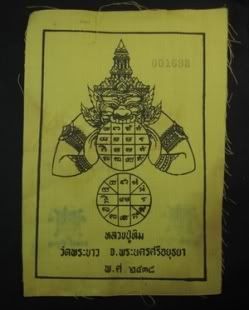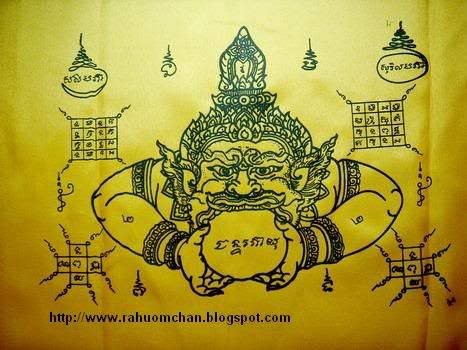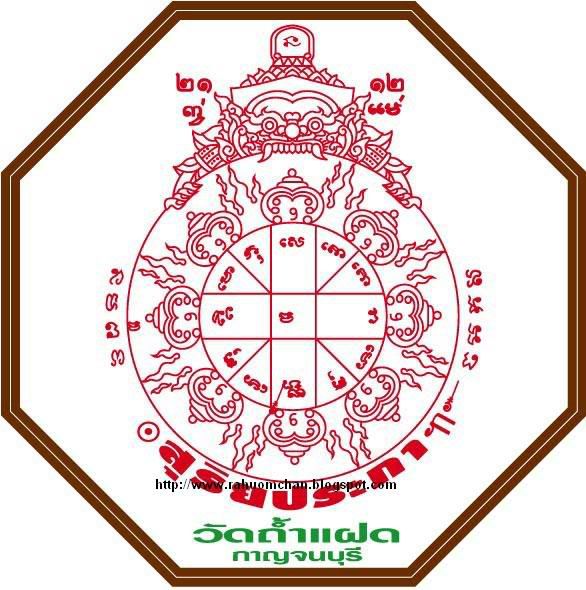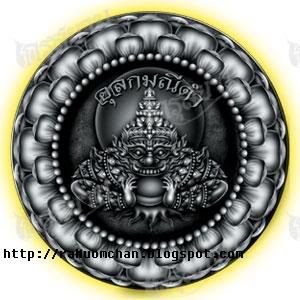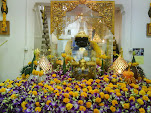Monday 31 August 2009
Sunday 30 August 2009
List of Supreme Patriarchs
1. Somdet Phra Ariyavongsanana
BE 2325-BE 2337
2. Somdet Phra Ariyavongsanana
BE 2337-BE 2359
3. Somdet Phra Ariyavongsanana
BE 2359-BE 2362
4. Somdet Phra Ariyavongsanana
BE 2363-BE 2365
5. Somdet Phra Ariyavongsanana
BE 2365-BE 2385
6. Somdet Phra Ariyavongsanana
BE 2386-BE 2392
7. Somdet Kromma Phra Paramanujit Jinorasa
BE 2394-BE 2396
8. Somdet Krom Phraya Pavares Variyalongkorn
BE 2396-BE 2435
9. Somdet Phra Ariyavongsagatanana
BE 2436-BE 2442
10. Somdet Krom Phraya Vajirananavarorasa
BE 2453-BE 2464
11. Somdet Kromma Luang Jinavorn Sirivaddhana
BE 2464-BE 2480
12. Somdet Phra Ariyavongsagatanana
BE 2481-BE 2487
13. Somdet Kromma Luang Vajirananavangsa
BE 2488-BE 2501
14. Somdet Phra Ariyavongsagatanana
BE 2503-BE 2505
15. Somdet Phra Ariyavongsagatanana
BE 2506-BE 2508
16. Somdet Phra Ariyavongsagatanana
BE 2508-BE 2514
17. Somdet Phra Ariyavongsagatanana
BE 2515-BE 2516
18. Somdet Phra Ariyavongsagatanana
BE 2516-BE 2531
19. Somdet Phra Nyanasamvara
BE 2532-present
BE 2325-BE 2337
2. Somdet Phra Ariyavongsanana
BE 2337-BE 2359
3. Somdet Phra Ariyavongsanana
BE 2359-BE 2362
4. Somdet Phra Ariyavongsanana
BE 2363-BE 2365
5. Somdet Phra Ariyavongsanana
BE 2365-BE 2385
6. Somdet Phra Ariyavongsanana
BE 2386-BE 2392
7. Somdet Kromma Phra Paramanujit Jinorasa
BE 2394-BE 2396
8. Somdet Krom Phraya Pavares Variyalongkorn
BE 2396-BE 2435
9. Somdet Phra Ariyavongsagatanana
BE 2436-BE 2442
10. Somdet Krom Phraya Vajirananavarorasa
BE 2453-BE 2464
11. Somdet Kromma Luang Jinavorn Sirivaddhana
BE 2464-BE 2480
12. Somdet Phra Ariyavongsagatanana
BE 2481-BE 2487
13. Somdet Kromma Luang Vajirananavangsa
BE 2488-BE 2501
14. Somdet Phra Ariyavongsagatanana
BE 2503-BE 2505
15. Somdet Phra Ariyavongsagatanana
BE 2506-BE 2508
16. Somdet Phra Ariyavongsagatanana
BE 2508-BE 2514
17. Somdet Phra Ariyavongsagatanana
BE 2515-BE 2516
18. Somdet Phra Ariyavongsagatanana
BE 2516-BE 2531
19. Somdet Phra Nyanasamvara
BE 2532-present
Friday 28 August 2009
四面神/四面佛
四面神是婆罗门教三大主神之一「大梵天」,所以正确来说,它是四面神而不是四面佛. 四面佛只是人们不知底蕴下,对祂的称谓。
在婆罗门教的传说中,大梵天是在那拉亚那神的肚脐上发芽的莲花中诞生。大梵天创造了人类、神仙以至魔鬼。
四面神的四个头分别朝向四方,祂的四面、八耳、八臂、八手,每隻手都拿有不同圣物,各有不同意思。
其中一种说法是指,一手持令旗(代表万能法力);一手持佛经(代表智慧);一手持法螺(代表赐福);一手持明轮(代表消灾、降魔、摧毁烦恼);一手持权杖(代表至上成就);一手持水壶(代表解渴、有求必应);一手持念珠(代表轮迴);一手持接胸手印(代表庇佑)。
不过,也有传说认为,大梵天其实也属佛陀的护法天神,有慈悲、仁爱、博爱、公正这四种性格,四面也对应了佛学的慈、悲、喜、捨。
拜祭有守则
很多人到泰国拜祭四面神或四面佛,不过对于真正的拜祭方式却未必人人知晓。当然,不同的人自然有不同的说法,不过最多人相信的,便是拜祭四面佛时,若自己工作的行业属正当行业,便依顺时针方向拜祭,若是做偏门的行业,则以逆时针的方向拜祭。插香时也有不同的做法,平常的人会在每一边插三支香,不过也有一种做法,就是点起七支香,由自己选择开始拜祭的方向次序,到第七支香供奉的一面,便代表这个方向的四面佛和自己的缘份较厚。
另外,有说还神要跳裸舞,其实只是因为四面佛喜欢看到人间的欢乐和热闹,并不是四面佛心存绮念。
四面各有意义
四面神的正面代表慈,顺时钟转去则是第二面代表悲,顺转下去到第三面代表喜,最后顺转到第四面则是捨。四个方向除有不同的意义外,也对应代表祈求不同的事情。正面的慈代表求取学业、事业、声望和地位,第二面悲代表求取爱情、婚姻等人际关係,第三面喜则是求取收入、富贵等,第四面捨是求健康、解难消灾等。
在婆罗门教的传说中,大梵天是在那拉亚那神的肚脐上发芽的莲花中诞生。大梵天创造了人类、神仙以至魔鬼。
四面神的四个头分别朝向四方,祂的四面、八耳、八臂、八手,每隻手都拿有不同圣物,各有不同意思。
其中一种说法是指,一手持令旗(代表万能法力);一手持佛经(代表智慧);一手持法螺(代表赐福);一手持明轮(代表消灾、降魔、摧毁烦恼);一手持权杖(代表至上成就);一手持水壶(代表解渴、有求必应);一手持念珠(代表轮迴);一手持接胸手印(代表庇佑)。
不过,也有传说认为,大梵天其实也属佛陀的护法天神,有慈悲、仁爱、博爱、公正这四种性格,四面也对应了佛学的慈、悲、喜、捨。
拜祭有守则
很多人到泰国拜祭四面神或四面佛,不过对于真正的拜祭方式却未必人人知晓。当然,不同的人自然有不同的说法,不过最多人相信的,便是拜祭四面佛时,若自己工作的行业属正当行业,便依顺时针方向拜祭,若是做偏门的行业,则以逆时针的方向拜祭。插香时也有不同的做法,平常的人会在每一边插三支香,不过也有一种做法,就是点起七支香,由自己选择开始拜祭的方向次序,到第七支香供奉的一面,便代表这个方向的四面佛和自己的缘份较厚。
另外,有说还神要跳裸舞,其实只是因为四面佛喜欢看到人间的欢乐和热闹,并不是四面佛心存绮念。
四面各有意义
四面神的正面代表慈,顺时钟转去则是第二面代表悲,顺转下去到第三面代表喜,最后顺转到第四面则是捨。四个方向除有不同的意义外,也对应代表祈求不同的事情。正面的慈代表求取学业、事业、声望和地位,第二面悲代表求取爱情、婚姻等人际关係,第三面喜则是求取收入、富贵等,第四面捨是求健康、解难消灾等。
Tuesday 25 August 2009
观世音
妙善公主
有关观音菩萨来源的传说,最常见当属妙善公主的说法。据说观世音父为印度的妙庄王,母为宝德后,观音名叫妙善,是三公主,爱修行学佛。她违抗父命到白雀寺出家,触怒父王把她处死。她的灵魂游览阴府后再还阳,在大香山苦心修炼,成了正果。后来更济度她的父母,观音既救苦救难,同时亦普渡众生,为了要同时应付众生的求助,所以观世音亦有多个化身,随时准备回应呼救。
本为男儿
在一些佛经传说中,观世音本为印度一位国王的长子,名叫不煦,和父亲及弟弟都随释迦出家修行,后来释迦牟尼佛给他父子改了名,父亲称「阿弥陀佛」,两个儿子称为「观世音」与「大势至」。观世音在左掌慈悲门,大势至在右掌智慧门,共同襄赞阿弥陀佛的教化,合称「西方三圣」。到唐朝时,因避太宗李世民之讳,把「世」字去掉,简称为「观音」。观世音在印度、东南亚、西藏等地都是男身,起初传到中国也是男人形象,唐末以后才有女身出现,而且法相变化多端。观世音有多变的形象,可能多达三十三种,最常见的有千手千眼观音、白衣观音、送子观音等,为了应世点化世人,观世音就会幻化出无数种形象,解救人们于危难之中。另有传说指古时候有堕胎和难产而死的女子下地狱后要在血池中受苦,只有观世音菩萨头上的九头龙,可以接近血池,吸乾血水拯救妇女,此为观音救苦救难的其中一个传说。
有关观音菩萨来源的传说,最常见当属妙善公主的说法。据说观世音父为印度的妙庄王,母为宝德后,观音名叫妙善,是三公主,爱修行学佛。她违抗父命到白雀寺出家,触怒父王把她处死。她的灵魂游览阴府后再还阳,在大香山苦心修炼,成了正果。后来更济度她的父母,观音既救苦救难,同时亦普渡众生,为了要同时应付众生的求助,所以观世音亦有多个化身,随时准备回应呼救。
本为男儿
在一些佛经传说中,观世音本为印度一位国王的长子,名叫不煦,和父亲及弟弟都随释迦出家修行,后来释迦牟尼佛给他父子改了名,父亲称「阿弥陀佛」,两个儿子称为「观世音」与「大势至」。观世音在左掌慈悲门,大势至在右掌智慧门,共同襄赞阿弥陀佛的教化,合称「西方三圣」。到唐朝时,因避太宗李世民之讳,把「世」字去掉,简称为「观音」。观世音在印度、东南亚、西藏等地都是男身,起初传到中国也是男人形象,唐末以后才有女身出现,而且法相变化多端。观世音有多变的形象,可能多达三十三种,最常见的有千手千眼观音、白衣观音、送子观音等,为了应世点化世人,观世音就会幻化出无数种形象,解救人们于危难之中。另有传说指古时候有堕胎和难产而死的女子下地狱后要在血池中受苦,只有观世音菩萨头上的九头龙,可以接近血池,吸乾血水拯救妇女,此为观音救苦救难的其中一个传说。
Monday 24 August 2009
Celebrating Ganesha Birthday
Yesterday was a BIG day for Lord Ganesha. We went to the temple early in the morning for the Pooja. Was really impressed by the way all the people had worked together. All the devotees can be sure that the offerings, regardless if it's milk, garland, sweets, fruit or even flowers were offered to Lord Ganesha. The committees help to open up the coconut and place every single piece of offerings from devotees on the table. After all the showering of statues, the priest read out all the devotees name and said a prayer which last about 20minutes.
Sunday 23 August 2009
History of Lord Buddha
Siddhartha (Buddha) was born around 563 B.C. in the town of Kapilavastu (located in today's Nepal). Siddhartha's parents were King Shuddhodana and Queen Maya, who ruled the Sakyas. His history is a miraculous one...
One night, Queen Maya dreamed that an elephant with six tusks, carrying a lotus flower in its trunk, touched her right side. At that moment her son was conceived. Brahmins (learned men) came and interpreted the dream. The child would be either the greatest king in the world or the greatest ascetic (a holy man who practices self-denial). The future child would be named Siddhartha, which means "he whose aim is accomplished." Later when Queen Maya was going to her father's home to prepare for the birth, she stepped off her chariot in the Lumbini Gardens and held the branch of a sal tree to rest. In that instant, Siddhartha emerged from her right side without any help. The infant walked seven steps each in four directions of the compass, and lotus flowers sprouted from where his foot touched the earth. Then the infant said, "No further births have I to endure, for this is my last body. Now shall I destroy and pluck out by the roots the sorrow that is caused by birth and death." Seven days later Queen Maya died.
Mahaprajapati, Maya's sister, looked after Siddhartha. King Shuddhodana shielded Siddhartha from all kinds of suffering and hardship. When Siddhartha was about 20, he married Yasodhara, daughter of one of the King's ministers, and one year later they had a child named Rahula (meaning "fetter" or "impediment"). At age 29, Siddhartha asked his charioteer, Channa, to take him out of the city two times without the consent of the king. During these two trips, Siddhartha saw "Four Sights" that changed his life.
On the first trip, he saw old age, sickness, and death. The second trip, he saw a wandering holy man, an ascetic, with no possessions. Siddhartha started questioning the holy man, who had a shaved head, wore only a ragged yellow robe, and carried a walking-staff. The man said, "I am... terrified by birth and death and therefore have adopted a homeless life to win salvation... I search for the most blessed state in which suffering, old age, and death are unknown." That night, Siddhartha silently kissed his sleeping wife and son, and ordered Channa to drive him out to the forest. At the edge of the forest, Siddhartha took off his jeweled sword, and cut off his hair and beard. He then took off all his princely garments and put on a yellow robe of a holy man. He then ordered Channa to take his possessions back to his father.
Siddhartha then wandered through northeastern India, sought out holy men, and learned about Samsara (reincarnation), Karma, and Moksha (freedom from the cycle of life and death). Attracted to the ideas of Moksha, Siddhartha settled on the bank of Nairanjana River, and adopted a life of extreme self-denial and penances, meditating constantly. After six years of eating and drinking only enough to stay alive, his body was emaciated, and he was very weak. Five other holy men joined him, hoping to learn from his example.
One day, Siddhartha realized that his years of penance only weakened his body, and he could not continue to meditate properly. When he stepped into the river to bathe, he was too weak to get out, and the trees lowered their branches to help him. In that instant, a milk-maid named Nandabala came and offered a bowl of milk and rice, which Siddhartha accepted. The five holy men left Siddhartha after witnessing this. Refreshed by the meal, Siddhartha sat down under a fig tree (often referred to as the Bo tree, or Tree of Enlightenment) and resolved to find out an answer to life and suffering. While meditating, Mara (an evil god) sent his three sons and daughters to tempt Siddhartha with thirst, lust, discontent, and distractions of pleasure. Siddhartha, un-swayed, entered a deep meditation, and recalled all his previous rebirths, gained knowledge of the cycle of births and deaths, and with certainty, cast off the ignorance and passion of his ego which bound him to the world. Thereupon, Siddhartha had attained enlightenment and became the Buddha (enlightened one). His own desire and suffering were over and, as the Buddha, he experienced Nirvana... "There is a sphere which is neither earth, nor water, nor fire, nor air...which is neither this world nor the other world, neither sun nor moon. I deny that it is coming or going, enduring, death or birth. It is only the end of suffering." Instead of casting off his body and his existence, however, Buddha made a great act of self-sacrifice. He turned back, determined to share his enlightenment with others so that all living souls could end the cycles of their own rebirth and suffering.Buddha went to the city of Sarnath and found the previous five holy men that deserted him earlier at a deer park. When they saw Buddha this time, they realized that he had risen to a higher state of holiness. The Buddha began teaching them what he had learned. He drew a circle in the ground with rice grains, representing the wheel of life that went on for existence after existence. This preaching was called his Deer Park Sermon, or "Setting in Motion the Wheel of Doctrine." Siddhartha revealed that he had become the Buddha, and described the pleasure that he had first known as a prince, and the life of severe asceticism that he had practiced.
Neither of these was the true path to Nirvana. The true path was the Middle Way, which keeps aloof from both extremes. "To satisfy the necessities of life is not evil," the Buddha said. "To keep the body in good health is a duty, for otherwise we shall not be able to trim the lamp of wisdom and keep our mind strong and clear." Buddha then taught them the Dharma, which consisted of the Four Noble Truths and the Eightfold Path. The five holy men and others soon joined Buddha, accompanying him everywhere. As more joined, Buddha organized the Sangha, a community of Bhikkus (dedicated monks and later nuns). The Sangha preserved the Dharma, and allowed Bhikkus to concentrate on the goal of Nirvana. On raining seasons they would settle in Viharas (resting places in cave dwellings). Upasaka, followers who believed in Buddha's teachings, but could not follow the strict rule of the Sangha, were taught to follow the Five Precepts.
Buddha returned to his birthplace in Kapilavastu, and his father was mortified to see his son begging for food. Buddha kissed his father's foot and said, "You belong to a noble line of kings. But I belong to the lineage of Buddhas, and thousands of those have lived on alms." King Shuddhadana then remembered the Brahmin's prophesy and reconciled with his son. Buddha's wife, son, and cousin (Ananda) later joined the Sangha. When Buddha was about eighty, a blacksmith named Cuanda gave him a meal that caused him to become ill. Buddha forced himself to travel to Kushinagar, and laid down on his right side to rest in a grove of shala trees. As a crowd of followers gathered, the trees sprouted blossoms and showered them on Buddha. Buddha told Ananda, "I am old and my journey is near its end. My body is like a worn-out cart held together only by the help of leather straps." Three times, Buddha asked the people if they had any questions, but they all remained silent. Finally Buddha said, "Everything that has been created is subject to decay and death. Everything is transitory. Work out your own salvation with diligence.
After passing through several states of meditation, the Buddha died, reaching Parinirvana (the cessation of perception and sensation).
One night, Queen Maya dreamed that an elephant with six tusks, carrying a lotus flower in its trunk, touched her right side. At that moment her son was conceived. Brahmins (learned men) came and interpreted the dream. The child would be either the greatest king in the world or the greatest ascetic (a holy man who practices self-denial). The future child would be named Siddhartha, which means "he whose aim is accomplished." Later when Queen Maya was going to her father's home to prepare for the birth, she stepped off her chariot in the Lumbini Gardens and held the branch of a sal tree to rest. In that instant, Siddhartha emerged from her right side without any help. The infant walked seven steps each in four directions of the compass, and lotus flowers sprouted from where his foot touched the earth. Then the infant said, "No further births have I to endure, for this is my last body. Now shall I destroy and pluck out by the roots the sorrow that is caused by birth and death." Seven days later Queen Maya died.
Mahaprajapati, Maya's sister, looked after Siddhartha. King Shuddhodana shielded Siddhartha from all kinds of suffering and hardship. When Siddhartha was about 20, he married Yasodhara, daughter of one of the King's ministers, and one year later they had a child named Rahula (meaning "fetter" or "impediment"). At age 29, Siddhartha asked his charioteer, Channa, to take him out of the city two times without the consent of the king. During these two trips, Siddhartha saw "Four Sights" that changed his life.
On the first trip, he saw old age, sickness, and death. The second trip, he saw a wandering holy man, an ascetic, with no possessions. Siddhartha started questioning the holy man, who had a shaved head, wore only a ragged yellow robe, and carried a walking-staff. The man said, "I am... terrified by birth and death and therefore have adopted a homeless life to win salvation... I search for the most blessed state in which suffering, old age, and death are unknown." That night, Siddhartha silently kissed his sleeping wife and son, and ordered Channa to drive him out to the forest. At the edge of the forest, Siddhartha took off his jeweled sword, and cut off his hair and beard. He then took off all his princely garments and put on a yellow robe of a holy man. He then ordered Channa to take his possessions back to his father.
Siddhartha then wandered through northeastern India, sought out holy men, and learned about Samsara (reincarnation), Karma, and Moksha (freedom from the cycle of life and death). Attracted to the ideas of Moksha, Siddhartha settled on the bank of Nairanjana River, and adopted a life of extreme self-denial and penances, meditating constantly. After six years of eating and drinking only enough to stay alive, his body was emaciated, and he was very weak. Five other holy men joined him, hoping to learn from his example.
One day, Siddhartha realized that his years of penance only weakened his body, and he could not continue to meditate properly. When he stepped into the river to bathe, he was too weak to get out, and the trees lowered their branches to help him. In that instant, a milk-maid named Nandabala came and offered a bowl of milk and rice, which Siddhartha accepted. The five holy men left Siddhartha after witnessing this. Refreshed by the meal, Siddhartha sat down under a fig tree (often referred to as the Bo tree, or Tree of Enlightenment) and resolved to find out an answer to life and suffering. While meditating, Mara (an evil god) sent his three sons and daughters to tempt Siddhartha with thirst, lust, discontent, and distractions of pleasure. Siddhartha, un-swayed, entered a deep meditation, and recalled all his previous rebirths, gained knowledge of the cycle of births and deaths, and with certainty, cast off the ignorance and passion of his ego which bound him to the world. Thereupon, Siddhartha had attained enlightenment and became the Buddha (enlightened one). His own desire and suffering were over and, as the Buddha, he experienced Nirvana... "There is a sphere which is neither earth, nor water, nor fire, nor air...which is neither this world nor the other world, neither sun nor moon. I deny that it is coming or going, enduring, death or birth. It is only the end of suffering." Instead of casting off his body and his existence, however, Buddha made a great act of self-sacrifice. He turned back, determined to share his enlightenment with others so that all living souls could end the cycles of their own rebirth and suffering.Buddha went to the city of Sarnath and found the previous five holy men that deserted him earlier at a deer park. When they saw Buddha this time, they realized that he had risen to a higher state of holiness. The Buddha began teaching them what he had learned. He drew a circle in the ground with rice grains, representing the wheel of life that went on for existence after existence. This preaching was called his Deer Park Sermon, or "Setting in Motion the Wheel of Doctrine." Siddhartha revealed that he had become the Buddha, and described the pleasure that he had first known as a prince, and the life of severe asceticism that he had practiced.
Neither of these was the true path to Nirvana. The true path was the Middle Way, which keeps aloof from both extremes. "To satisfy the necessities of life is not evil," the Buddha said. "To keep the body in good health is a duty, for otherwise we shall not be able to trim the lamp of wisdom and keep our mind strong and clear." Buddha then taught them the Dharma, which consisted of the Four Noble Truths and the Eightfold Path. The five holy men and others soon joined Buddha, accompanying him everywhere. As more joined, Buddha organized the Sangha, a community of Bhikkus (dedicated monks and later nuns). The Sangha preserved the Dharma, and allowed Bhikkus to concentrate on the goal of Nirvana. On raining seasons they would settle in Viharas (resting places in cave dwellings). Upasaka, followers who believed in Buddha's teachings, but could not follow the strict rule of the Sangha, were taught to follow the Five Precepts.
Buddha returned to his birthplace in Kapilavastu, and his father was mortified to see his son begging for food. Buddha kissed his father's foot and said, "You belong to a noble line of kings. But I belong to the lineage of Buddhas, and thousands of those have lived on alms." King Shuddhadana then remembered the Brahmin's prophesy and reconciled with his son. Buddha's wife, son, and cousin (Ananda) later joined the Sangha. When Buddha was about eighty, a blacksmith named Cuanda gave him a meal that caused him to become ill. Buddha forced himself to travel to Kushinagar, and laid down on his right side to rest in a grove of shala trees. As a crowd of followers gathered, the trees sprouted blossoms and showered them on Buddha. Buddha told Ananda, "I am old and my journey is near its end. My body is like a worn-out cart held together only by the help of leather straps." Three times, Buddha asked the people if they had any questions, but they all remained silent. Finally Buddha said, "Everything that has been created is subject to decay and death. Everything is transitory. Work out your own salvation with diligence.
After passing through several states of meditation, the Buddha died, reaching Parinirvana (the cessation of perception and sensation).
Saturday 22 August 2009
象头神
属于印度人的信仰神祗,没有任何一个会比起年纪小小的象头神,更和俗世关係密切。
印度人相信,象是最有记忆力,友善和定力坚决的动物,而且很重义气。因此,凡有意企求事业顺利的人们,都喜欢预先礼敬及祈求象头神的支持。因为它是命运之神。在西藏和泰国等东南亚国家的佛教信仰中,他也是“财神”。 经常陪伴着他的是一隻狡猾的老鼠,这正证明了印度人的信念:只要是有仁善的智慧驾御着,诡计多端是无伤大雅的手段。
象头神的形象和象徵
据知,象头神一共有卅二大化身,时而3头,4头,时而4手,6手,8手,多手,时而青肤、红肤、黄肤、黑肤。 他造型的特别点是断了右旁的弯象牙,有时那半截象牙握在其中一隻手上。 半截的折牙象徵着,世上不会有完好理想的命运,凡要达到成功,知识或智慧,都要作出牺牲。 象头神在天界是大门的守者,所以他经常坐在四瓣莲花所化的檀城上,他管理了记忆及知识所能到的范围,以监督记忆,原因,影响力,推动力,爱及隔离感六种,所以在鼻上绑了一个铃子,以作为警惕。
此外,象头神的颈项还挂着几串圈链、珠光宝气长长的拖至其腹部。这是表示象头神大肚能容天下事,宇宙间所有的“能”与“不能”(命运)全部都包容在象头神的肚子里。
有时,圈链是横绑在腹背上。在象头神的象鼻端,勾着一瓶恒河的水,这是用来替侍奉他的信徒作洁淨祝福的。
象头神用法器很多,有书本、莲花、弓箭、斧戟、念珠等等,当祂现忿怒像时就手多多,儘是拿武器,但平常却手拿各种水果和糖果,一付嘴馋的淘气少年造型。
一般上的庙里,象头神像总是拿两种法器──螺与索。一般上,法螺多拿在神的右手中,是用来替信徒移去障碍。螺的号角吹响,催促着信徒去奋斗。而螺的中间凹陷,可以聚集财宝,所以它也象徵了如意,众生聚宝如意的愿望。
象头神左手拿的法索,样子和其他神只所持的相似,功用却不同,它不是战斗缚魔用的,而是用来“抓拿障碍及困难”,引导信徒走正确的方向。 这条索也被神用来拉近信徒与祂的距离。
注: 来临的星期日就是象头神的大日子,很多信徒都会买花环和牛奶去祭拜,当然我也不例外。
印度人相信,象是最有记忆力,友善和定力坚决的动物,而且很重义气。因此,凡有意企求事业顺利的人们,都喜欢预先礼敬及祈求象头神的支持。因为它是命运之神。在西藏和泰国等东南亚国家的佛教信仰中,他也是“财神”。 经常陪伴着他的是一隻狡猾的老鼠,这正证明了印度人的信念:只要是有仁善的智慧驾御着,诡计多端是无伤大雅的手段。
象头神的形象和象徵
据知,象头神一共有卅二大化身,时而3头,4头,时而4手,6手,8手,多手,时而青肤、红肤、黄肤、黑肤。 他造型的特别点是断了右旁的弯象牙,有时那半截象牙握在其中一隻手上。 半截的折牙象徵着,世上不会有完好理想的命运,凡要达到成功,知识或智慧,都要作出牺牲。 象头神在天界是大门的守者,所以他经常坐在四瓣莲花所化的檀城上,他管理了记忆及知识所能到的范围,以监督记忆,原因,影响力,推动力,爱及隔离感六种,所以在鼻上绑了一个铃子,以作为警惕。
此外,象头神的颈项还挂着几串圈链、珠光宝气长长的拖至其腹部。这是表示象头神大肚能容天下事,宇宙间所有的“能”与“不能”(命运)全部都包容在象头神的肚子里。
有时,圈链是横绑在腹背上。在象头神的象鼻端,勾着一瓶恒河的水,这是用来替侍奉他的信徒作洁淨祝福的。
象头神用法器很多,有书本、莲花、弓箭、斧戟、念珠等等,当祂现忿怒像时就手多多,儘是拿武器,但平常却手拿各种水果和糖果,一付嘴馋的淘气少年造型。
一般上的庙里,象头神像总是拿两种法器──螺与索。一般上,法螺多拿在神的右手中,是用来替信徒移去障碍。螺的号角吹响,催促着信徒去奋斗。而螺的中间凹陷,可以聚集财宝,所以它也象徵了如意,众生聚宝如意的愿望。
象头神左手拿的法索,样子和其他神只所持的相似,功用却不同,它不是战斗缚魔用的,而是用来“抓拿障碍及困难”,引导信徒走正确的方向。 这条索也被神用来拉近信徒与祂的距离。
注: 来临的星期日就是象头神的大日子,很多信徒都会买花环和牛奶去祭拜,当然我也不例外。
Friday 21 August 2009
“要么不做,要做就要做好”,
“要么不做,要做就要做好”,问自己也经历过很多很多的事,也做了许多浪费时间,又无效率的事情,一直以来,只拿解决问题做挡箭牌, 真的得要改过!
有些人以做大事为动力,口号喊的声声响,为了什么?不过是想让人对他刮目相看,以为他们很了不起,其实只是表面看来很了不起,其实就是空口说白话!从小细节,小工作来衡量一个人能否做成大事,也不是说我们每个人都是以做到领导为成功,做一份事应该从点滴的小事做起,锻炼自己细节处能否做好,连小事都做不好的原因不外以下几点。
有些人以做大事为动力,口号喊的声声响,为了什么?不过是想让人对他刮目相看,以为他们很了不起,其实只是表面看来很了不起,其实就是空口说白话!从小细节,小工作来衡量一个人能否做成大事,也不是说我们每个人都是以做到领导为成功,做一份事应该从点滴的小事做起,锻炼自己细节处能否做好,连小事都做不好的原因不外以下几点。
- 首先在态度上已经对这些小事不重视,敷衍了事,随便就行了,管他地方是不是肮肮脏脏,又不是自己家,不用动手打扫。管他是不是人命关天,有钱才好说话,有钱买东西插队也可以!
- 再就是你对下达这小事的人存在偏见或则意见,从而犯了对人不对事的毛病。有道是见高就拜,见低就踩!
- 还有就是自以为是,认为这种小事做过N遍,毫无新意可言,不动脑的机械性做事。
- 还可能是你认为这些小事对你而言本不该你去做,大材小用之嫌。
当然还有其他原因等等。每个人都有优缺点,每个人处理事情的方式方法各不同,但相同的是我们做事有多细,事情完成有多好,这是要经的起检验的标准。
我认为能看见小事的人,将来自然看到大事,一个只能看见大事的人,他会忽略很多小事,不知道自己错过了什么!
Thursday 20 August 2009
Sunday 16 August 2009
Thursday 13 August 2009
Sunday 9 August 2009
Holy shower and gold foil from Monk
This morning we went over to Lorong Ong Lye for the holy shower and also for the monk to place the golden foil on our forehead. According to him, it's for luck and also protect us from danger (平安). This time round he did not ask me where did i purchase the flower from since i'm consider quite regular to visit him. By the way, it's good to take the holy shower if we are feeling down or unlucky, but if things improved, it's better to stop, probably for us becos the set of flowers with it's special stuff inside is supposed to "sweep" away things and of course we do not want the good luck to be swept aways isn't it?
Monday 3 August 2009
Saturday 1 August 2009
Subscribe to:
Posts (Atom)

